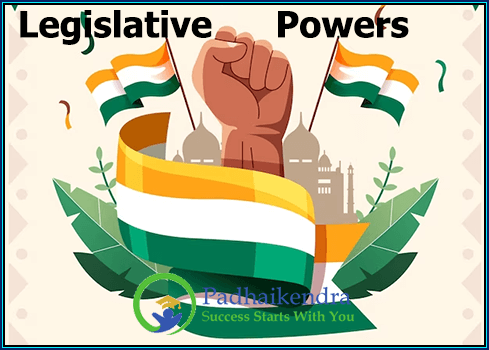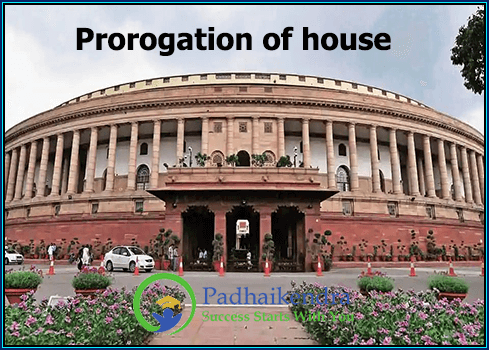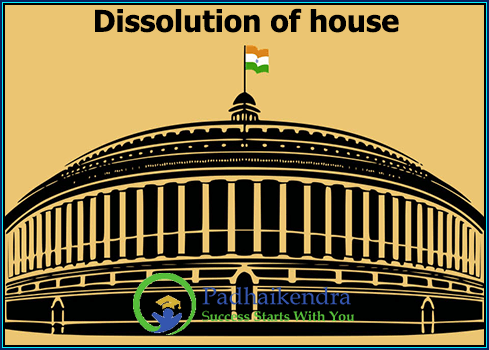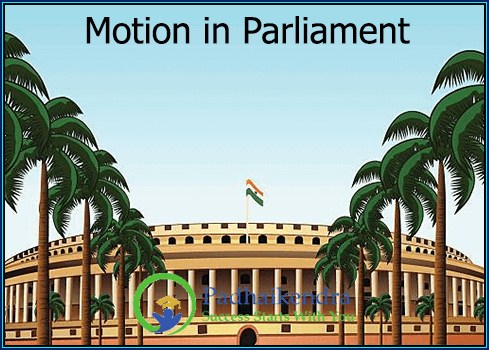The President has the power to summon or prorogue the sessions of the Parliament and can also dissolve the Lok Sabha, the lower house of the Parliament. The President can also give assent to bills passed by the Parliament and can promulgate ordinances when the Parliament is not in session.
- Absolute Veto : Absolute veto refers to the power of the President or Governor to reject any bill passed by the Legislature without providing any reasons for the rejection. In India, the President has the power of absolute veto over the legislative powers of the Parliament.
According to Article 111 of the Constitution of India, if a bill passed by the Parliament is presented to the President for his assent, the President can either give his assent to the bill or withhold his assent. If the President withholds his assent, the bill fails to become law.
The President can exercise his absolute veto in the following circumstances:
- If the bill violates the Constitution of India
- If the bill is against the national interest
- If the bill is not in the public interest
- If the bill is beyond the legislative competence of the Parliament
It is important to note that the power of absolute veto is rarely used in India. Instead, the President generally exercises his power of suspensive veto, which means that he returns the bill to the Parliament for reconsideration along with his suggestions. If the Parliament passes the bill again with or without modifications, the President is bound to give his assent to the bill.
2. Suspensive Veto : Suspensive veto refers to the power of the President or Governor to return a bill passed by the Legislature for reconsideration. In India, the President has the power of suspensive veto over the legislative powers of the Parliament.
According to Article 111 of the Constitution of India, if a bill passed by the Parliament is presented to the President for his assent, the President can return the bill for reconsideration to the Parliament along with his recommendations. The Parliament can then pass the bill again, with or without modifications, and present it to the President for his assent.
The President can exercise his suspensive veto in the following circumstances:
- If the bill needs further clarification or amendment
- If the bill requires further discussion or debate
- If the President has any concerns or objections to the bill
If the Parliament passes the bill again with or without modifications, the President is bound to give his assent to the bill. However, if the Parliament does not pass the bill again, the bill will not become law.
- Pocket Veto : Pocket veto refers to the power of the President to indirectly veto a bill by simply not taking any action on it. The term “pocket” refers to the President’s ability to keep the bill in his pocket and not sign it or return it to the Parliament for reconsideration.
In India, the President can exercise the pocket veto in the following manner:
- If a bill is passed by the Parliament and sent to the President for his assent, the President can keep the bill pending without taking any action on it.
- If the President does not sign the bill and returns it to the Parliament within the specified time period, the bill fails to become law.
- If the President does not sign the bill and also does not return it to the Parliament within the specified time period, the bill is deemed to have been passed by the Parliament and becomes law.
The pocket veto is a rare occurrence in India, and it has been used only a few times in the history of independent India. It is usually used by the President when he is not in agreement with the bill but does not want to exercise his formal veto power. The pocket veto is often criticized for being an undemocratic practice as it allows the President to indirectly veto a bill without providing any reasons for doing so.





